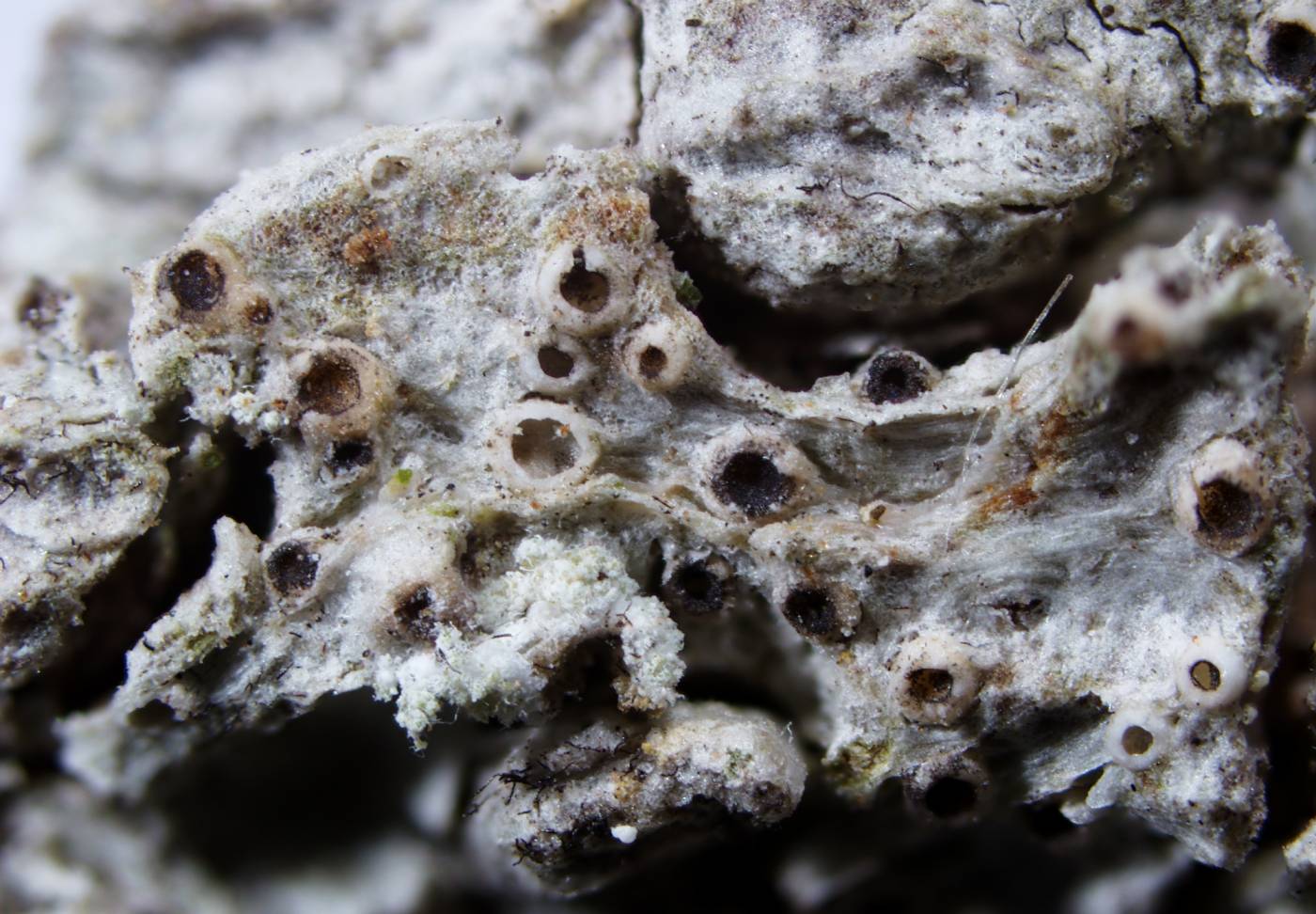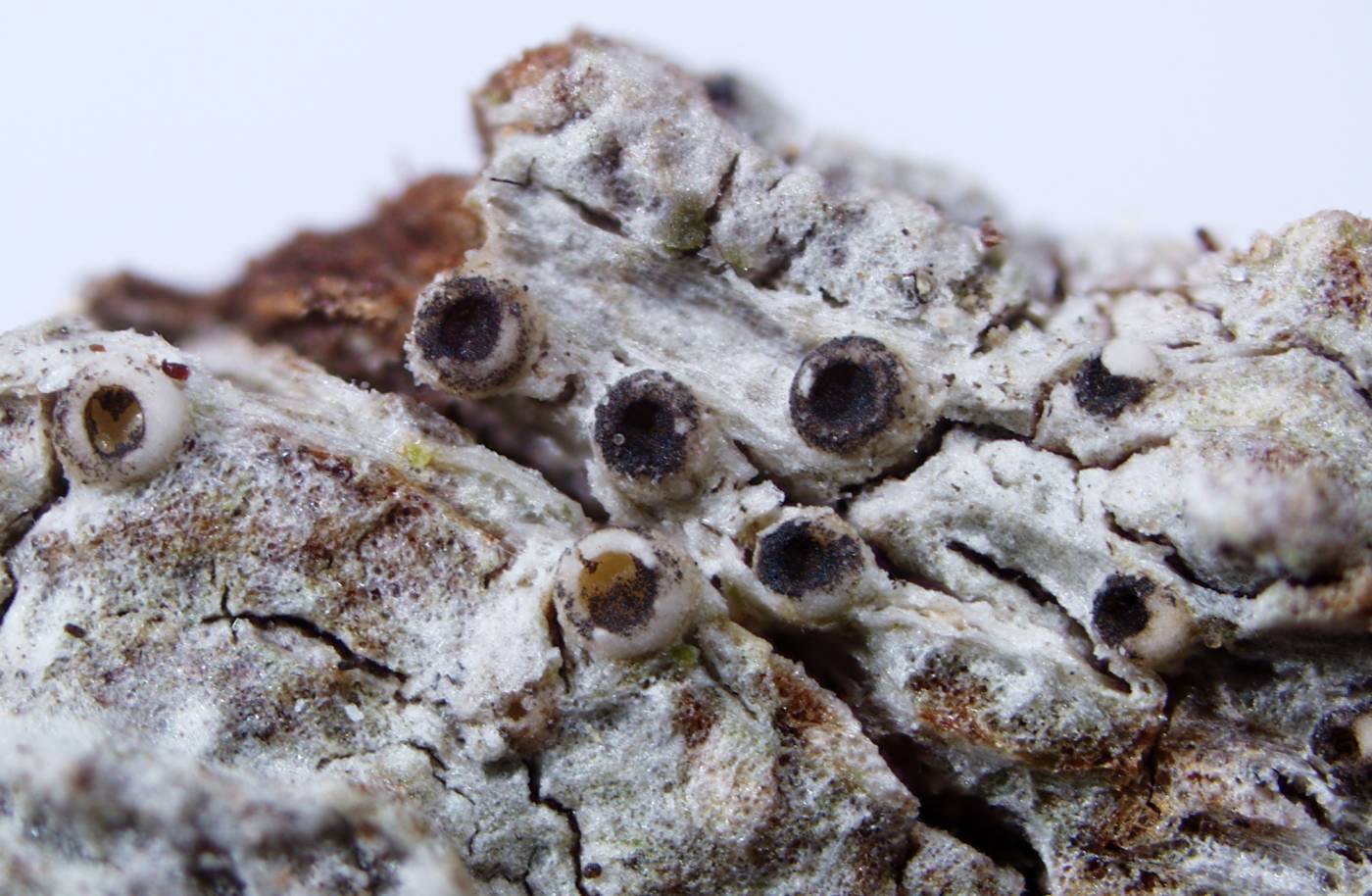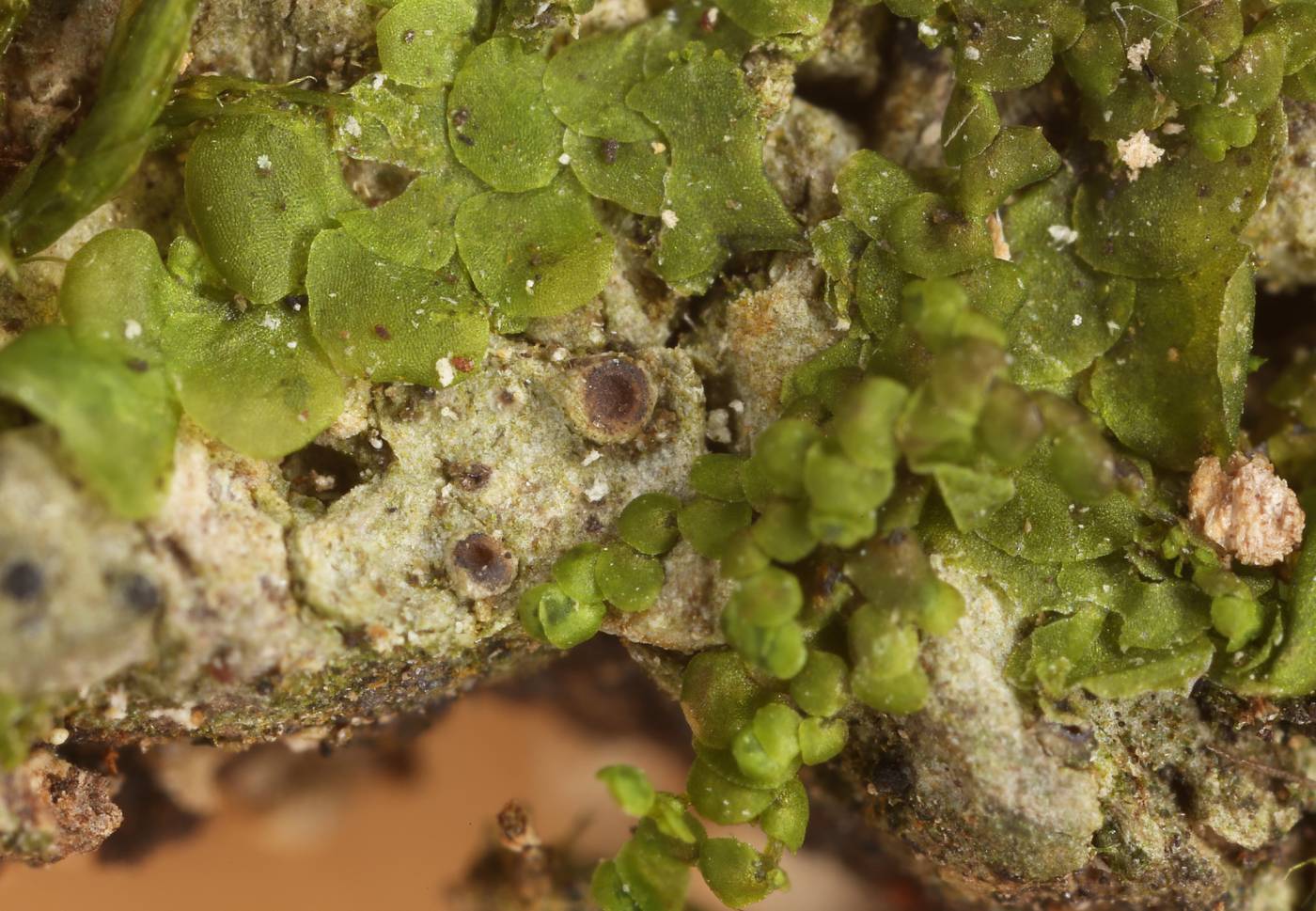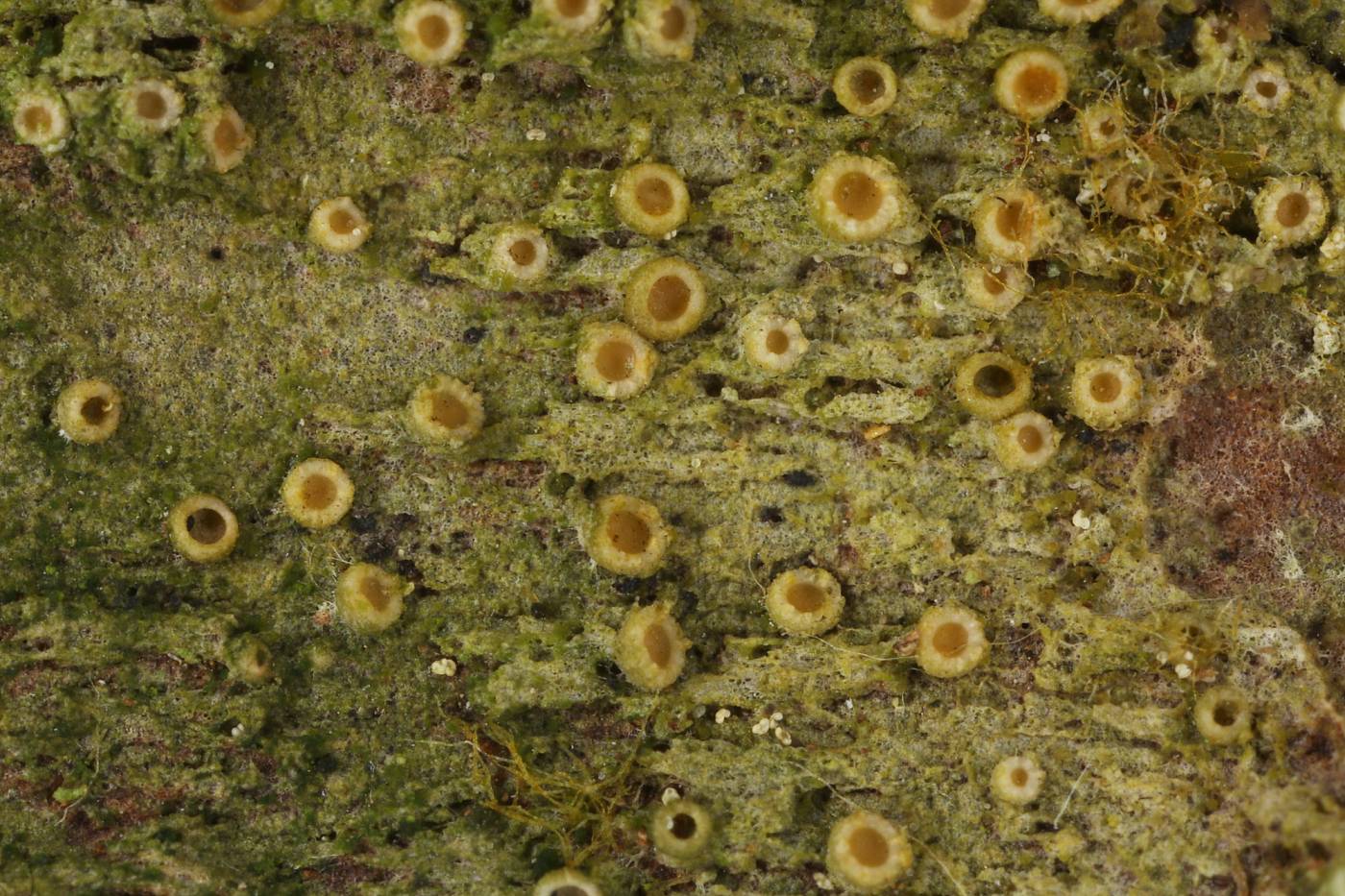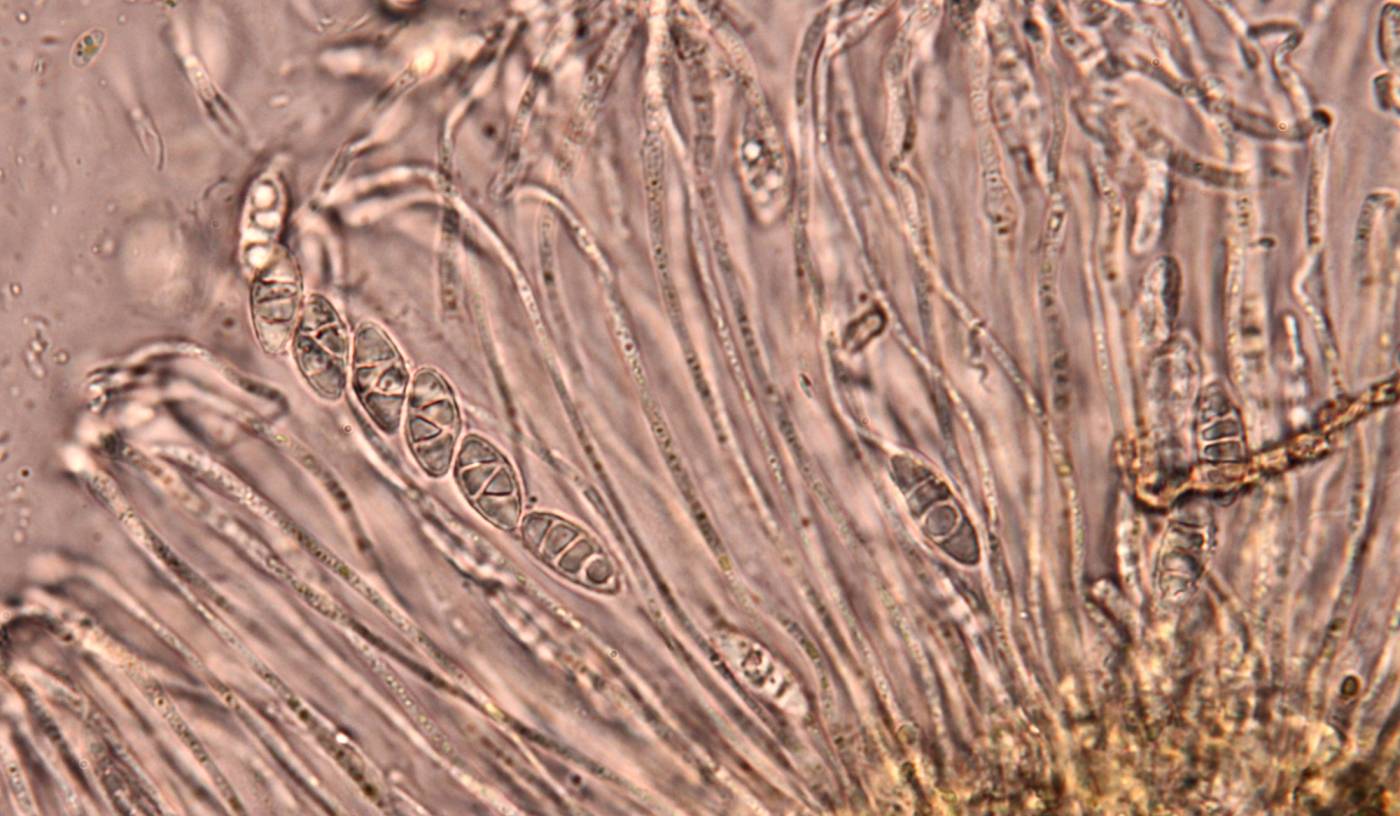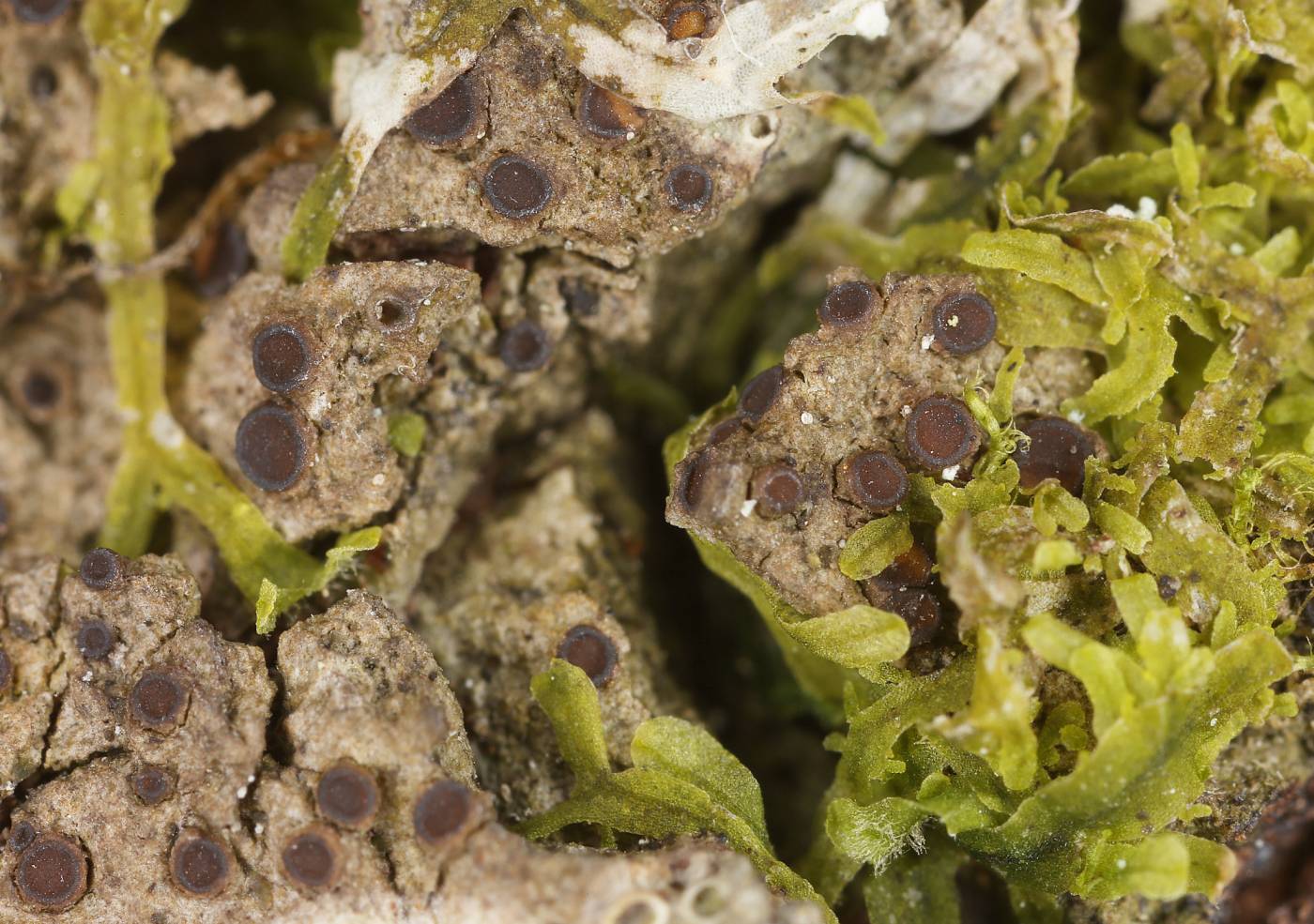This lichen is considered an important indicator of old-growth forests, especially beech ones, where it typically grows on weathered and porous, subneutral bark of old dying beeches. Such trees are usually noticeably different from ordinary beeches, as they are colonised by diverse communities of lichens and mosses. Apart from beeches, this species can be found in scree forests, most often on Acer platanoides. Historically, it occurred in the Czech Republic, for example, in the Žďárské vrchy Hills, Šumava Mts, Brdy Hills (Vězda 1958), close to Telč (Vězda 1964) and Ralsko (Anders 1936). Dated at the turn of the millennium, there are only few reports from four forest reserves in the Šumava Mountains (Jelení vrch, Stožec, Hraničník) and the Novohradské hory Mountains (Žofín). However, thanks to the intensive research and exploration of the Czech old-growth forests in the last two decades, a number of new localities have been discovered. Recently, this species has been recorded also in the Beskydy Mountains, Brdy Hills, the Třebíč and Křivoklát regions and Český les Mts. Nowadays (since 2000), this species occurs altogether in at least 15 localities concentrated mainly in the Šumava and Beskydy Mountains.
Literature: Anders J. (1936): Die Flechten Nordböhmens. IV. Nachtrag. – Beihefte zum Botanischen Centralblatt 54B: 429–488. Vězda A. (1958): Československé druhy rodu Gyalecta a Pachyphiale s klíčem a přehledem evropských druhů. – Sborník Vysoké školy zemědělské a lesnické v Brně 1958/1: 21–56. Vězda A. (1964): Lichenes selecti exsiccati, editi ab Instituto botanico Academiae Scientiarum Čechoslovacae, Průhonice prope Pragam. Fasciculus IX.−XII. (no. 201−300). − 32 p., Brno.
taxonomic classification:Ascomycota → Lecanoromycetes → Ostropales → Gyalectaceae → Gyalecta
Red List (Liška & Palice 2010):CR – critically endangered
Red List (Malíček 2023):C3 – endangered
Occurrence in the Czech Republic
All records: 51, confirmed 46. One click on a selected square displays particular record(s), including their source(s).
